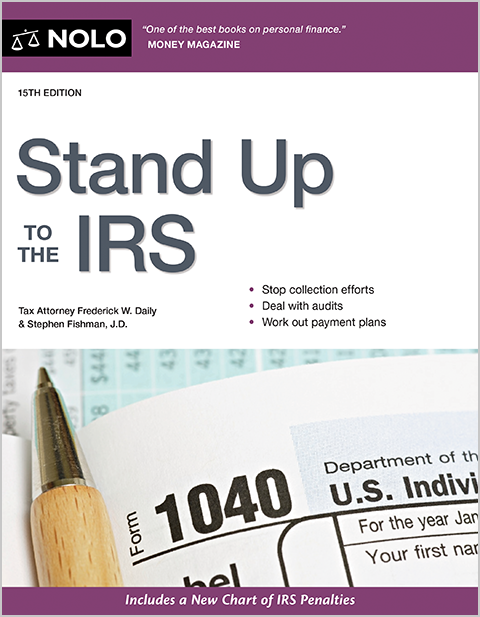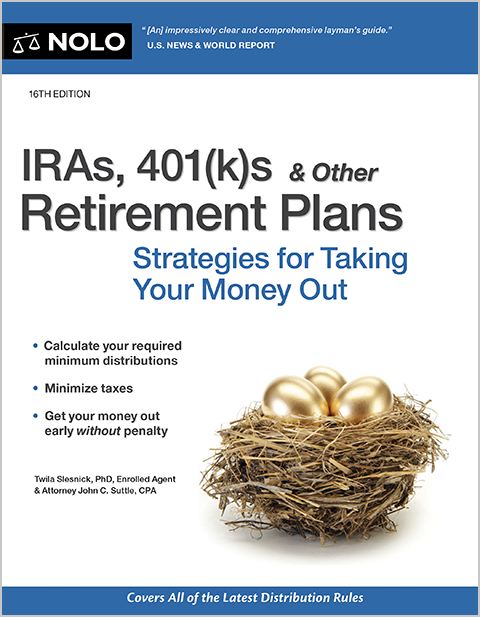Find out how to maximize your vehicle tax deduction. Compare the easy standard rate with the potentially larger, but more demanding, actual expense method.
If you drive a car, panel truck, van, pickup, or SUV for business, you have two options for deducting your vehicle expenses:
- using the standard mileage rate (fast and simple), or
- deducting your actual expenses (more work, but maybe worth it).
Most people use the standard rate because it's simpler and requires less recordkeeping—you only need to keep track of how many business miles you drive, not the actual expenses for your car. But you might be able to deduct more if you use the actual expense method.
- Who Can Deduct Vehicle Expense?
- What Is the IRS Standard Mileage Rate for 2025?
- Using the Standard Mileage Rate In the First Year You Use a Car for Business
- Using the Actual Expense Method
- Standard Mileage Rate vs. Actual Expense Method: Comparison Chart
- Standard Mileage vs. Actual Expense: Which Saves You More?
- How to Track Business Mileage (Logbook and Sampling Method)
- Get Professional Help and More Resources
Who Can Deduct Vehicle Expense?
In the past, individual taxpayers (employees) were often able to deduct expenses when driving a personal vehicle for business purposes. However, the Tax Cuts and Jobs Act of 2017 eliminated this deduction for individuals from 2018 through 2025. But self-employed taxpayers and business owners who use their personal vehicle for business-related travel can still claim a deduction.
So, if you use a personal car or another vehicle for business purposes other than just commuting to and from work, you're entitled to take a deduction for driving expenses.
What Is the IRS Standard Mileage Rate for 2025?
With the standard mileage rate, you deduct a set amount for each business mile you drive. The IRS sets the amount each year. For tax year 2025 (the taxes you file in 2026), the standard mileage rate is 70 cents per mile.
How to Use the Standard Mileage Rate
To figure out your deduction, simply multiply your business miles by the applicable standard mileage rate. So, when you use the standard rate, you don't need to keep track of how much you actually spend on gas, repairs, and other car expenses during the year. All you have to do is track your business mileage and total annual mileage.
Most people use the standard mileage rate because it's the simplest and easiest method.
What You Can and Can't Deduct
If you choose the standard mileage rate, you can't deduct actual car operating expenses—for example, maintenance and repairs, gasoline and its taxes, oil, insurance, and vehicle registration fees. All of these items are factored into the rate the IRS sets. And you can't deduct the cost of the car through depreciation or Section 179 expensing because the car's depreciation is also factored into the standard mileage rate (as are lease payments for a leased car).
The only expenses you can deduct (because these costs aren't included in the standard mileage rate) are:
- interest on a car loan
- parking fees and tolls for business trips (but you can't deduct parking ticket fines or the cost of parking your car at your place of work), and
- personal property tax that you paid when you bought the vehicle, based on its value—this is often included as part of your auto registration fee.
Using the Standard Mileage Rate In the First Year You Use a Car for Business
You must use the standard mileage rate in the first year you use a car for business, or you're forever prohibited from using that method for that car. If you use the standard mileage rate in the first year, you can switch to the actual expense method in a later year, and then switch back and forth between the two methods after that.
For this reason, if you're not sure which method you want to use, it's a good idea to use the standard mileage rate the first year you use the car for business. This leaves all your options open for later years. But this rule doesn't apply to leased cars. If you lease your car, you must use the standard mileage rate for the entire lease period if you use it in the first year.
Using the Actual Expense Method
As the name implies, under the actual expense method, you deduct the actual costs you incur each year to operate your car, plus depreciation.
List of Deductible Vehicle Costs
If you use this method, you must keep careful track of all the costs you incur for your car during the year, including:
- gas and oil
- repairs and maintenance
- depreciation of your original vehicle and improvements
- car repair tools
- license fees
- parking fees for business trips
- registration fees
- tires
- insurance
- garage rent
- tolls for business trips
- car washing
- lease payments
- interest on car loans
- towing charges, and
- auto club dues.
How to Calculate Your Business Use Percentage
When you do your taxes, add up the cost of all these items. For everything but parking fees and tolls, multiply the total cost of all items by your car's business use percentage. You determine your business use percentage by keeping track of all the miles you drive for business during the year and the total mileage driven. You divide the business mileage by your total mileage to figure your business use percentage. For parking fees and tolls that are business related, include (and deduct) the full cost. The total is your deductible transportation expense for the year.
If you have a car that you use only for business, you can deduct 100% of your actual car costs. Be careful, though. If you own just one car, it's usually hard to claim that you use it only for business. The IRS isn't likely to believe that you walk or take public transportation everywhere except when you're on business. If you're a sole proprietor or the owner of a one-person LLC, the IRS will know how many cars you own, because sole proprietors who claim transportation expenses must provide this information on their Schedule C.
Using the actual expense method, you can deduct the cost of your vehicle. However, you can't deduct the entire cost in the year when you purchase your car. Instead, you must deduct the cost a portion at a time over several years, using a process called "depreciation."
For more information on using the actual expense method and vehicle depreciation, refer to Deduct It!, by Stephen Fishman (Nolo).
Standard Mileage Rate vs. Actual Expense Method: Comparison Chart
| Feature | Standard Mileage Rate | Actual Expense Method |
| Recordkeeping Required | Low (mileage only) | High (all expenses) |
| Deduction Size | Moderate | Potentially higher |
| Complexity | Simple | Time-intensive |
| Flexibility | Flexible after first year | Must stay consistent |
Standard Mileage vs. Actual Expense: Which Saves You More?
If you take the standard deduction, you have a much easier task. But your deduction might be smaller. However, this isn't always the case. The standard mileage rate might provide a larger deduction if you drive many business miles each year, especially if you drive an inexpensive car.
If you go with the standard mileage deduction, you'll have to keep a mileage log. For the actual expense method, you'll need the mileage log plus receipts for all the expenses you plan to deduct. Ultimately, you need to decide how much effort you want to put into claiming the deduction.
Can I Switch Between Mileage and Actual Expense Methods?
To be safe, you might want to keep track of all your expenses and mileage the first year you purchase a car for business. Then, when you do your taxes for the year, you can calculate what your deduction would be using both methods. You can then choose whether to use the actual expense method. Keep in mind that if you do so, you'll have to continue to use this method for as long as you own your car. Also, remember that you're allowed to use the standard mileage rate only if you use it the first year you use your car for business.
How to Track Business Mileage (Logbook and Sampling Method)
Again, if you use a vehicle for business, you can either deduct the actual cost of your gas and other expenses or take the standard rate deduction based on the number of business miles you drive. Either way, you must keep a record of your mileage.
52-Week Mileage Log
The hardest way to track your mileage—and the way the IRS would like you to do it—is to keep track of every mile you drive every day, 52 weeks a year, using a mileage logbook or business diary. This means you'll list every trip you take, whether for business, commuting, or personal reasons. If you enjoy record keeping, go ahead and use this method.
However, there is a much easier way: Use a sampling method.
Sampling Method
Under the sampling method, you keep track of your business mileage for a sample portion of the year and use your figures for that period to extrapolate your business mileage for the whole year. This method assumes that you drive about the same amount for business throughout the year. To back up this assumption, you must scrupulously keep an appointment book showing your business appointments all year long. If you don't want to keep an appointment book, don't use the sampling method.
Your sample period must be at least 90 days—for example, the first three months of the year. Alternatively, you may sample one week each month—for example, the first week of every month. You don't have to use the first three months of the year or the first week of every month; you could use any other three-month period or the second, third, or fourth week of every month. Use whatever works best. You want your sample period to be as representative as possible of the business travel you do throughout the year.
You must keep track of the total miles you drove during the year by taking odometer readings on January 1 and December 31 and deducting any atypical mileage before applying your sample results.
Get Professional Help and More Resources
For more information about tax deductions, talk to a tax pro, such as a tax lawyer or a certified public accountant. For more information about the standard mileage rate and actual expense method, see the IRS Standard mileage rates website and IRS Topic no. 510, Business use of car.
Talk to a Tax Attorney
Need a lawyer? Start here.
How it Works
- Briefly tell us about your case
- Provide your contact information
- Choose attorneys to contact you
- Who Can Deduct Vehicle Expense?
- What Is the IRS Standard Mileage Rate for 2025?
- Using the Standard Mileage Rate In the First Year You Use a Car for Business
- Using the Actual Expense Method
- Standard Mileage Rate vs. Actual Expense Method: Comparison Chart
- Standard Mileage vs. Actual Expense: Which Saves You More?
- How to Track Business Mileage (Logbook and Sampling Method)
- Get Professional Help and More Resources
- Briefly tell us about your case
- Provide your contact information
- Choose attorneys to contact you

